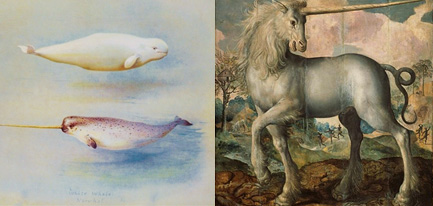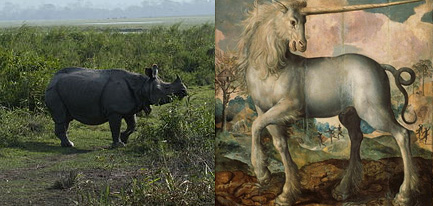Vikings Pedal Narwhal Tusks as Unicorn Horns

It can be confusing to us now how people could accept anything coming from a narwhal as belonging to a unicorn. The mythological unicorn was meant to be a beautiful horse, with a single horn out of the middle of its head. Meanwhile, the very real narwhal is a toothed whale, growing up to 5.5 meters long. The males of the species have a large swordlike, spiral tusk, which is actually an extended tooth. [ref] https://www.nationalgeographic.com/animals/mammals/n/narwhal/ [/ref] Yet people paid large sums of money for the tusk of the narwhal thinking they were buying the horn of a unicorn. However, the unicorn was thought to come from a land far away from Europe, and the narwhal certainly did come from a place difficult for most Europeans to reach. The narwhale dwells in arctic waters, in northern Greenland, Canada and Russia, [ref] http://www.iucnredlist.org/details/13704/0 [/ref]. These arctic waters would be beyond the reach of most sea going vessels. However, the Vikings did fish in these waters, and would catch narwhals themselves and would also trade with Indigenous populations in the far north for tusks. [ref] https://www.smithsonianmag.com/science-nature/in-search-of-the-mysterious-narwhal-124904726/ [/ref] The tusks were then traded through the Vikings’ vast network throughout Europe as unicorn horn.… Continue reading

